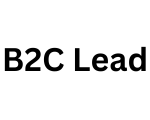How to Send Form Data to Email Using Javascript Codepen
Sending form data to an email address is a common requirement in web development. This article presents a step-by-step guide on how to achieve this using JavaScript and CodePen, a popular online code editor.
Setting Up the Form
To begin, create an HTML form with appropriate input fields for collecting user data, such as name, email address, and message. Utilize the <form> element along with the necessary <input> tags, providing them with unique IDs and Spain email list names for easy identification.
Next, include a <script> tag within the HTML code to embed JavaScript logic for handling form submission. Use the getElementById method to access the form and its input elements by their IDs, enabling data retrieval from user inputs.
Capturing and Validating Form Data
In the JavaScript code, create an event listener for the form’s submit event. Upon submission, prevent the default action to handle data programmatically. Retrieve the user-entered data from the input fields, and implement validation checks to ensure data integrity before proceeding.
Sending Data via EmailJS
To securely send form data via email, utilize EmailJS, a third-party service. Sign up for an account on the EmailJS website and get the B2C Lead required API credentials. Then, integrate the EmailJS SDK by importing it in the JavaScript section of CodePen. Configure the service using your API credentials to enable seamless email transmission.
Composing and Sending the Email
Compose the email template using EmailJS’s template editor, customizing it with form data placeholders. Implement the sendEmail function in the JavaScript code to trigger the email transmission upon successful form validation. Insert the form data into the email template using EmailJS syntax. Before final deployment, test the form thoroughly to ensure it collects and sends data accurately. Debug any issues that arise during testing, such as validation errors or improper data formatting. Use CodePen’s console and browser developer tools to track down and fix potential errors.







